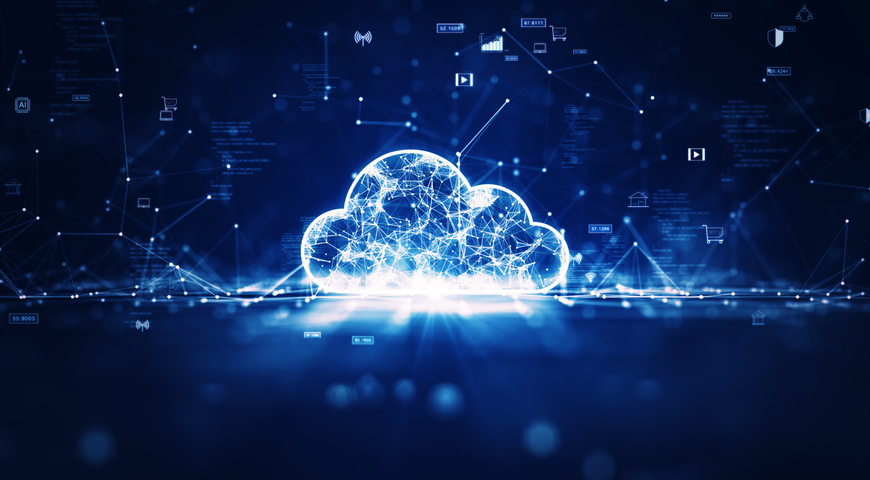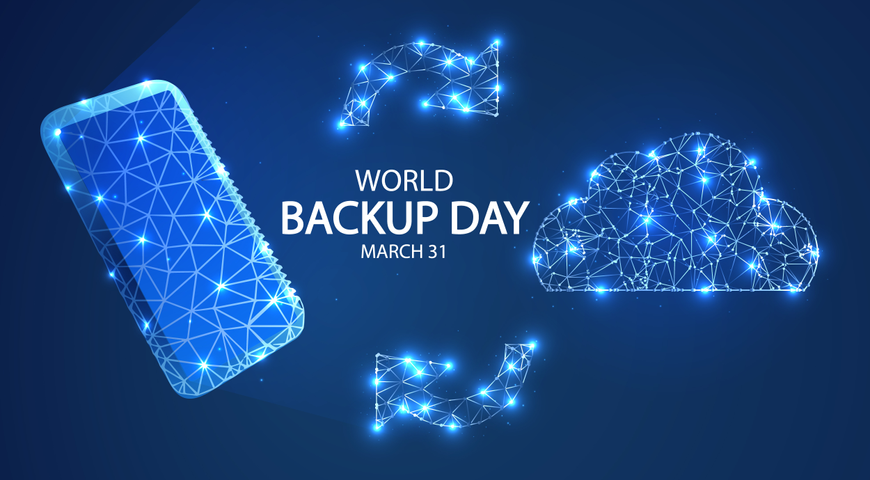
Malware, also known as malicious software, is one of the most dangerous and destructive ever-present threats capable of stealing your sensitive data, using your computer or mobile device for mining cryptocurrency, or locking your entire database and demanding ransom to access your valuable files again.
Whether you're browsing the web, checking emails, or downloading an app, the risk of malware infection exists everywhere; it's a real, growing, and destructive threat. The most concerning part is that nobody is immune to such attacks, and the question is not what the chance is of falling victim to a malware attack—it is when it will happen.
Fortunately, anti-malware protection solutions have been evolving and upgrading their protection capabilities to prevent you from becoming the next victim on cybercriminals' lists. Equipping yourself with reliable and effective anti-malware protection software can position you one step ahead of malware attacks.
This guide will help you understand how malware works, what the consequences can be if your computer or mobile devices are infected with malicious software, and how to evaluate the best anti-malware solutions.
We will break down the most common types of malware, how they can infiltrate your system like a thief walking into your house at night, and what key features to look for when selecting the right anti-malware solution that meets your requirements and expectations.
By the end of this article, you will have the knowledge to prepare yourself for the unexpected and safeguard your most valuable asset nowadays: your sensitive information and the database you have been storing and collecting throughout your entire life.
Understanding malware threats
Modern malware threats have changed and improved significantly from the simpler viruses of the past decade; many now employ advanced evasion techniques, polymorphic code that changes its signature to avoid detection, and some sophisticated variants may leverage machine learning methods to bypass security measures.
What makes this particularly concerning? Even well-designed anti-malware and antivirus software face challenges keeping pace with these evolving cyberattacks, potentially leaving vulnerabilities that attackers might exploit.
As we connect more aspects of our lives to the internet—from smart home devices to financial applications—the potential attack surfaces for malware expand significantly.
What is Malware? A breakdown of different types
Malware is software developed by cybercriminals to infect your device, steal data and sensitive information, encrypt your database, or even destroy your PC. Malware can be met in different variations, and each of them is extremely harmful, so let's break down each type and see how they work:
- Viruses: As the name suggests, a virus is a self-replicating code that easily attaches to some of your programs, and it is activated once this particular program runs. The main purpose of this cyber threat is to corrupt or modify files on your computer.
- Trojans: Deceptive programs masquerade as legitimate software, secretly performing unauthorized actions—from stealing passwords to creating backdoor system access, providing cybercriminals with unauthorized access to every file on your computer.
- Ransomware: This is among the most financially damaging types of malware that encrypts your data, demanding payment for the decryption key. Ransomware forces you to choose between paying the ransom or permanently losing your entire database. Ever wondered why these cyberattacks made national security headlines recently? This is because ransomware has emerged as a significant threat in our digital world.
- Spyware: This type of malware silently monitors your actions, collecting sensitive information like banking credentials, passwords and other sensitive information without your knowledge—often operating for months before detection.
- Adware: While typically focused on displaying unwanted advertisements, some advanced forms can consume system resources and potentially collect your sensitive information.
- Worms: Unlike viruses, worms self-r without requiring user interaction, exploiting network vulnerabilities to spread across multiple devices.
- Rootkits: These advanced threats modify your operating system at fundamental levels, granting persistent unauthorized access while actively concealing their presence from security tools.
How malware infects your devices
Malware uses different approaches and techniques to reach your devices, and all of them are equally harmful and fast-spreading:
Phishing attacks: A phishing attack is when you receive email(s) pretending to come from a trustful institution, websites, couriers, etc., and they trick you into clicking suspicious links, downloading malicious attachments, or providing sensitive information. If you do it, then the malware infection settles on your computer and spreads across your files.
Malicious downloads: Seemingly legitimate software, especially free versions from unofficial sources, often bundled with hidden malware payloads.
Exploiting software vulnerabilities: Unpatched security flaws in outdated software provide cybercriminals with entry points—keeping your OS and third-party applications up to date is crucial for blocking malware and significantly reducing your attack surface.
USB and external devices: Physical media can spread malware between systems, particularly in environments where multiple devices share hardware.
The impact of malware on personal and business security
The consequences of malware infections are severe; for individuals, malware can compromise personal data, drain bank accounts, steal identities, and exploit system resources for cryptomining. For businesses, the stakes are even higher—with average ransomware payments reaching $391.015 in Q1 2024, according to Coveware's 2024 Quarterly Ransomware Report, while total incident recovery costs now average $4.88 million, according to IBM's Cost of a Data Breach Report 2024.
Beyond the financial impact, malware ruins trust, damages reputation, and creates significant operational disruption. The most concerning trend? Today's advanced malware often deploys multiple attack techniques simultaneously, making detection increasingly challenging even for the best antivirus software.
What makes anti-malware protection effective?
Powerful detection capabilities literally form the foundation of any effective solution. The most reliable anti-malware protection software combines signature-based detection with heuristic and behavioral analysis. These solutions achieve great detection rates, enabling them to easily identify known threats and suspicious behavioral patterns that may indicate new threats still unknown in threat intelligence databases.
Real-time protection is of utmost importance in the digital world we live in, where cyberthreats stalk us around the corner to strike at the most inappropriate moment. The days of spending time on scheduled scans alone ended years ago; effective anti-malware protection actively monitors system activity, file operations, and network communications continuously without heavily affecting your PC's resources.
Next in line, regular updates represent another critical factor in an effective anti-malware solution because, as we all know, cyberthreats evolve and change daily, and outdated software leaves significant vulnerabilities exposed. This is why automatic, frequent updates are so important because they ensure maximum coverage against the latest cyberthreats.
Remember that even if you are equipped with the best anti-malware protection offering countless advanced features, it becomes worthless if you need to disable them because they heavily affect your PC's performance. The best anti-malware solutions have found the perfect balance between thorough protection and performance impact.
False positives are another factor that separates professional-grade tools from average offerings. The best solutions not only detect but also effectively remove malware while avoiding flagging legitimate applications as threats.
Key features to look for in anti-malware software
When selecting anti-malware software, prioritize solutions that offer superior protection, which will keep malware threats away from stepping foot on your devices. For your convenience, we have created a list of the most important features to look for:
Real-time threat detection
Real-time threat detection is responsible for monitoring your system activities to identify suspicious behavior before disaster strikes. Quality solutions scan files upon access rather than waiting for scheduled scans, providing effective protection.
Behavior-based scanning
This is a type of scanning that analyzes every single program's actions rather than relying on known threat signatures. This approach is able to identify zero-day threats by detecting suspicious activities like unauthorized encryption attempts and unusual system modifications.
Software updater
As we previously discussed, threat actors continuously evolve their malicious code and attack vectors daily. To keep pace with this development, anti-malware protection solutions must maintain a parallel update strategy operating 24/7/365. The main goal is to protect against the newest types of malware and attack methods.
Ransomware protection
Ransomware is the most financially devastating cyberattack you may face; today, cybercriminals use it as a weapon to gain limitless financial benefits, hiding behind their computers while destroying their victims' lives.
Anti-malware software uses special algorithms to find encryption patterns and unauthorized changes to your files. This lets it stop a ransomware attack before it starts; furthermore, many vendors offer recovery features to restore compromised files from secured backups if the worst happens.
Phishing protection
Phishing protection is fundamental to significantly minimizing the chances of experiencing malware attacks. It works by filtering malicious emails, links, suspicious attachments, and social engineering attempts, with the main goal of stopping them before they reach your device.
Firewall protection
This feature is responsible for monitoring all of your incoming and outgoing traffic based on predetermined security rules, blocking suspicious connections, and preventing data exfiltration by malware that may have already compromised system integrity.
How Anti-malware solutions work?
Anti-malware solutions use different approaches to detect and prevent threats from infecting your devices, each with specific strengths and limitations.
Signature-based detection—Traditional approaches remain the foundation of many anti-malware products, comparing file characteristics against databases of known threats. While effective against known types of malware, this approach struggles with zero-day threats and polymorphic code.
Heuristic analysis—This is a more advanced approach compared to signature-based detection because it examines code for suspicious characteristics or behaviors that resemble known malicious patterns. This technique can identify previously unknown threats based on their similarity to existing malware.
AI and machine learning-based threat detection—The most advanced solutions leverage artificial intelligence algorithms to identify malicious code based on behavioral patterns rather than specific signatures. These systems continuously improve their detection capabilities by analyzing vast datasets of both benign and malicious code.
Choosing the best anti-malware protection for your needs
Your specific requirements will determine which anti-malware solution is best for you. Start by assessing what matters most to you—is it comprehensive protection, minimal system impact, or specific features like parental controls? Consider the number of devices you need to protect and how you typically use them.
Review the features we covered earlier to determine which are essential for your situation. Remember that the "best" solution varies from person to person—what works perfectly for one person might not for another.
Many anti-malware programs provide free trials, which you might consider exploring before subscribing. This hands-on experience will tell you more about compatibility with your system than any review could.
Free vs. paid anti-malware software: What is the difference?
Free software typically offers basic protection against common threats, providing essential real-time scanning and quarantine capabilities. However, these solutions often lack the comprehensive protection mechanisms found in their premium versions.
Paid versions offer advanced heuristic analysis, AI-driven threat detection, machine learning algorithms for behavioral monitoring, dedicated ransomware protection, and enhanced exploit prevention. When evaluating options, pay close attention to specific protective capabilities rather than marketing claims. Most security software vendors strategically limit AI and ML-powered features in free versions to drive conversions, particularly for emerging threat categories where sophisticated detection methodologies provide critical advantages.
Protection for personal computers
Malware attacks have quadrupled since the COVID-19 crisis hit the world and changed it entirely; many people lost their jobs, while others started working from home. Can you imagine millions of people using their PCs to work from home, connected to their Wi-Fi networks? Cybercriminals saw this as a once-in-a-lifetime opportunity to gain unlimited financial benefits through malware and ransomware attacks.
Being equipped with anti-malware protection is like wearing steel shoes when walking on pieces of glass; there is no chance of hurting yourself, but if you are barefoot, then get ready to lose blood. The same analogy applies if you are not equipped with additional anti-malware protection; your PC becomes a lot more vulnerable to the mean and destructive malware infections.
Through advanced threat detection and quarantine capabilities, today's anti-malware programs are able to identify cyberthreats in real time and intercept them at their early stage, saving you time, money, and headaches.
Mobile security solutions
Nowadays, we all use mobile devices that have become an inevitable part of our lives for calls, messages, online banking operations, online shopping, entertainment, etc. The more frequently we use these devices, the higher the likelihood of malware infection. This is why it is absolutely mandatory to take care of and protect your PC and mobile phone.
Many individuals overlook the importance of equipping themselves with additional security software on their devices, mistakenly believing that the built-in security software will be sufficient to thwart 99.9% of cyberthreats; however, this is not realistic. The best anti-malware solutions will protect your PC and mobile devices, minimizing the attack surface.
Evaluating and comparing top anti-malware software
In a world full of cyberthreats, having anti-malware software is a necessity, but with so many options on the market, how would you know which one to choose? In order to help you with that task we reviewed and compared some of the most effective and reliable anti-malware solutions that are able to achieve incredibly high detection rates and provide you with the added protection you need.
Let's explore in detail these top-notch protection solutions and help you decide which fits your requirements and budget best.
1. Acronis True Image
Acronis True Image offers you complete cybersecurity protection, an easy-to-use and reliable solution against data loss, cyberattacks, and identity theft.
Pricing plans:
- Essentials Plan: $49.99 annually for single-device protection with local/network backup capabilities and ransomware safeguards
- Advanced Plan: $57.99 annually with 50GB cloud storage (expandable to 500GB for $89.99)
- Premium Plan: $124.99 annually with 1TB storage, scaling to 5TB for five devices ($369.99)
Each tier offers deployment flexibility across 1-5 devices with corresponding price adjustments, providing operational scalability for diverse security requirements.
Core Protection Capabilities
- Comprehensive Backup Architecture - Creates complete system images including discs, files, and partitions, full, incremental and differential backups.
- Multi-Destination Backup Strategy - Supports local directories, network locations, and proprietary cloud storage
- Ransomware Detection - Based on behavioral analysis effectively preventing zero-day threats
- Automatic Recovery - One-click recovery of all files affected by ransomware
- Identity Protection - Strong and effective identity protection feature to protect you from : tax, medical and employment identity theft.
- Real-time Cyber Protection - Detection and blocking of malicious processes
- File Synchronization Protocol - Enables seamless data syncing across multiple endpoints
- Secure Zone Technology - Creates encrypted partitions resistant to malware compromise
- Cloud Archiving System - Offloads large files to cloud storage for optimal local resource utilization
- Blockchain Certification - Provides file verification and digital signature authentication (Premium)
- Microsoft 365 Integration - Delivers enhanced protection for cloud-based productivity assets
- Intuitive User Interface - Provides an extremely user-friendly experience with clear navigation and accessible controls for users of all technical levels
- Optimized System Impact - Operates efficiently in the background without heavily draining system resources or degrading device performance
2. Norton 360
Norton 360 leverages decades of anti-virus software expertise to deliver a comprehensive protection suite that combines traditional malware detection with modern privacy features and performance optimization.
Pricing Plans:
- Standard Plan: $29.99 first year (€74.99 renewal) - Single device with 10GB cloud backup
- Premium Tier: $49.99 first year - 10 device protection with 75GB backup capacity
Key Protection Elements:
- Real-Time Defense System - Comprehensive protection against advanced threats
- Password Manager - Integrated credential security architecture
- Parental Control Framework - Advanced content filtering and monitoring (Premium)
3. Bitdefender
Bitdefender establishes a new paradigm in anti-malware and antivirus tools implementation through its resource-efficient architecture that delivers robust protection without compromising system performance or user experience.
Pricing Plans:
- Antivirus Plus: $19.99 first year - Protection for 3 Windows systems
- Total Security: $49.99 - Cross-platform protection for 5 devices
- Premium Security: $69.99 - Unlimited VPN and password manager integration
Operational Advantages:
- Resource-Efficient Scanning - Minimal system performance impact compared to other antivirus software
- Non-Intrusive Protection - Background operation without workflow disruption
- Cross-Platform Compatibility - Unified protection across diverse operating environments
- Seamless Integration - Non-disruptive implementation without application conflicts
4. Kaspersky
Kaspersky implements a strategic approach to antivirus software through its tiered solution framework, enabling organizations to select protection levels aligned with their specific needs and operational requirements.
Pricing Plans:
- Standard Plan: $30/year - Core protection framework
- Plus Option: $40/year - Enhanced with data leak protection and VPN integration
- Premium Solution: $50/year - Comprehensive identity protection architecture
Advanced Protection Features:
- Real-Time Defense System - Protection against viruses, malware, and ransomware
- Transaction Security - Payment protection features
- Dual-Direction Firewall - Network-level threat mitigation
- Anti-Phishing Framework - Protection against social engineering attacks
5. McAfee
McAfee distinguishes its antivirus tools through an identity-centric approach that prioritizes personal data protection alongside traditional threat mitigation, delivering a comprehensive security ecosystem that surpasses free antivirus capabilities.
Pricing Plans:
- Basic : $34.97/year (two-year plan) - Single device protection
- Premium: $49.97/year - 10 device protection with unlimited VPN
Protection capabilities:
- Automated Privacy Controls - Context-aware VPN activation
- Protection Score System - Custom security guidance beyond standard free antivirus offerings
- Password Manager - Integrated credential protection architecture
- Scalable Deployment - Multi-device management capabilities
6. Avast Antivirus
Avast Antivirus is a reliable and efficient integrated security framework that combines advanced threat detection capabilities with performance optimization technologies.
Pricing Plans:
- Ultimate: $69.99/first year ($139.99 renewal) - Premium protection bundle for up to 10 diverse devices
- Single Device Option: $49.99/first year ($109.99 renewal) - Concentrated protection for one primary system
Core Protection Capabilities:
- Multi-Vector Threat Detection - Comprehensive defense against polymorphic malware, ransomware, and zero-day threats
- Network Security Protocol - Advanced Wi-Fi vulnerability assessment and mitigation
- Performance Optimization Engine - System resource management and bloatware remediation
- Identity Protection Matrix - Anti-tracking technology with digital fingerprint cloaking
- Secure Connection Infrastructure - Military-grade VPN encryption for sensitive transactions
- Resource Reclamation System - Intelligent storage optimization and performance acceleration
How to compare anti-malware software based on your security needs?
When selecting which anti-malware software to choose, look for one offering detection rates above 95%; only the best anti-malware solutions can reach these numbers and keep malware away from stepping foot on your devices. Keep in mind that no protection software in the world guarantees 100% immunity to malware and other cyberthreats.
Another aspect to consider when choosing is how user-friendly and intuitive the platform is because even the best anti-malware programs become worthless when they make users' lives hard with a confusing interface.
Ease of setup is equally important; you must be provided with detailed information about how exactly to install the software and configure it to use its maximum capacity for protecting your computer.
Resource efficiency and system impact are from utmost importance; if you have a gaming computer, then you probably will not be concerned that the anti-malware software will drain your resources and affect its performance, but if you have an older PC, then opt for software that performs silently in the background without degrading system performance. We all know how disturbing this can be, so choose wisely.
Last but not least, select an anti-malware program that offers 24/7/365 customer support because all kinds of issues can arise during the use of the software, from technical problems to emergency situations if the worst happens. In such cases, you will need to contact the expert team to avoid any catastrophic consequences.
Another beneficial decision would be to read user reviews to learn more about the software's capabilities and the vendor's reputation.
Setting up and optimizing for the best anti-alware protection
Begin by downloading software only from official websites—never from third-party ones. During installation, choose the "custom" option instead of "express" to control exactly what gets installed. Should you enable cloud protection? Absolutely! This feature sends suspicious files for analysis, giving you an extra layer of defense without slowing your system.
Updating and maintaining your security software
Outdated security software is like a wall full of holes; you cannot rely on it to keep you warm in the winter. Enable automatic updates to be protected against the latest threats, set these updates to install overnight when you are not using your computer. Do not ignore any updates; they're not just annoying pop-ups but critical protection improvements.
Running regular system scans and what to do if malware is detected
Weekly full scans keep your system clean—since they can take several hours to scan your entire system, you can schedule them for times when you are not using your computer, overnight, or when you are not at home.
What happens if malware is detected? Don't panic. Let your software handle it first, as most can quarantine threats automatically. Next, immediately disconnect your device from the internet and run a boot-time scan where malware has fewer places to hide.
Avoiding common mistakes that leave you vulnerable
What is the weakest link in every security system? The human factor, even perfect software, cannot protect against clicking suspicious links or using "password123" everywhere. Use different passwords for important accounts and think twice before clicking on any links, even those coming from friends. And remember—if a pop-up says "Your computer is infected!" and offers an instant fix, it is almost always the very malware it claims to detect a potential infection.
The future of anti-malware protection
Today’s cyberthreats have transformed from simple to sophisticated and destructive multi-stage attacks. Ransomware is now able to exfiltrate data before encryption to double the extortion opportunity. Supply chain attacks became particularly concerning — why hack one company when cybercriminals can compromise an MSP and infiltrate thousands of organizations simultaneously? We are also seeing a rise in fileless malware that settles in your device’s memory, leaving minimal forensic evidence.
Efficient anti-malware programs leverages machine learning to identify malicious patterns and behaviors rather than the old fashioned specific code signatures. Machine learning is capable of analyzing millions of file characteristics to spot potential threats before they execute and things get out of control.
Fortunately, today's anti-malware software combines behavioral analysis with memory scanning to catch threats that never touch the disk space. What makes this approach so powerful? Unlike traditional signature-based detection methods that require prior identification of specific malware code patterns, AI-powered systems can identify novel and previously undocumented threats by analyzing execution patterns and behavioral characteristics.
AI and machine learning have proven particularly effective against polymorphic malware—sophisticated code that constantly changes its appearance to evade detection. This adaptive threat detection represents a fundamental shift from reactive to proactive security, analyzing how programs behave rather than just what they look like. The result? Significantly improved detection rates with fewer false positives, keeping systems protected against even the most sophisticated attacks that traditional solutions would miss.
Furthermore, the cybersecurity landscape is clearly shifting toward zero-trust architecture as the standard—instead of assuming anything inside your network is safe, every access request will require verification. Predictive protection will evolve from reactive to anticipatory, stopping attacks before they fully develop.
Cloud-based security will dominate, enabling real-time threat intelligence sharing across millions of endpoints. How will these changes affect everyday users? Protection will become more seamless and invisible, with fewer notifications but stronger security working silently in the background.
Conclusion
Nowadays, being online is like finding yourself on a battlefield where relying on built-in security systems is not an option since they simply fall short of providing you with the protection needed to have peace of mind knowing malware attacks will not step foot on your computer. As we have explored throughout this article, the malware threats you may face on a daily basis employ sophisticated techniques and approaches—from file attacks that leave minimal traces to ransomware that deploys double-extortion tactics.
These cyberattacks demand equally sophisticated and efficient protection to prevent falling victim to cybercriminals mean tactics to lock your database and exfiltrate sensitive information to use it against you with the main purpose of gaining financial benefits while leaving you broke and in a state of shock.
The most critical insight? It is safe to say that anti-malware protection depends on both technology and behavior; even the most advanced solutions cannot protect you if you click on malicious links, download files from untrusted and suspicious websites, or use weak passwords that can easily be cracked by hackers. Achieving cyber resilience requires a combination of multi-layered protection, combining effective anti-malware software with informed user practices.
When selecting the right software for your needs, keep in mind that detection capabilities vary significantly between different solutions; some offer extra features that improve the protection capabilities. Usually they come at a higher price, but if being honest, there is no high price when protecting your digital identity and all the sensitive information and precious files stored on your computer.
While free anti-malware solutions may detect known threats, they lack the advanced behavioral analysis needed to keep you safe by identifying zero-day exploits and polymorphic malware that change their signature to evade detection on a daily basis.
For those seeking robust protection, equipping yourself with Acronis True Image provides you the opportunity to create a safe, encrypted environment that remains protected even during sophisticated attacks. Through the automatic updates, you will be protected against the newest threats, even the zero-day attacks, while the top-notch backup capabilities will ensure your critical data remains recoverable under any circumstances, preparing you for the unexpected.
Using Acronis True Image provides you with an all-in-one solution that is capable of protecting you from all kinds of cyberthreats, doing the hard work, while for you remains the pleasant feeling of knowing that whatever the situation, you will be safe! Nowadays, the question is not whether you will ever face a malware or other cyberattack, but whether you will be prepared when it happens.
Do not hesitate to invest in the best protection available and join the Acronis family. We assure you that you won't regret your decision.
FAQs
What’s the difference between antivirus and anti-malware software?
Antivirus software primarily targets traditional threats like viruses, worms, and trojans, often using signature-based detection. Anti-malware focuses on broader, evolving threats such as ransomware, spyware, and zero-day attacks, employing behavioral analysis. While antivirus is essential for baseline protection, anti-malware adds an extra layer of security.
Do I need anti-malware software if I already have a firewall?
Yes, you do. Firewalls monitor and control incoming and outgoing network traffic but don’t detect or remove malware already on your device. While anti-malware software scans your system for malicious programs, ensuring threats are identified and eliminated.
How often should I scan my computer for malware?
Perform a full malware scan at least once a week. If you frequently download files, visit unfamiliar websites, or notice unusual system behavior, consider scanning more often. Real-time protection in antivirus or anti-malware software helps, but regular scans ensure no threats slip through. Consistency is key to maintaining a secure system.
Is Windows Defender enough for malware protection?
Windows Defender provides a basic protection and is sufficient for many users. However, for advanced threats or high-risk environments, pairing it with a dedicated anti-malware solution is advisable. Windows Defender excels at detecting common threats but may lack the depth of specialized tools.
Do mobile devices need anti-malware protection?
Absolutely. Mobile devices are increasingly targeted by malware, phishing, and malicious apps. Anti-malware software for mobile devices adds an extra layer of defense, protecting your data and privacy. Don’t overlook mobile security—it’s as important as protecting your computer.
About Acronis
A Swiss company founded in Singapore in 2003, Acronis has 15 offices worldwide and employees in 50+ countries. Acronis Cyber Protect Cloud is available in 26 languages in 150 countries and is used by over 21,000 service providers to protect over 750,000 businesses.




